
NPS Photo Paleontology isn't necessarily a dead science... Although our paleontologists study remnants of ancient life, the research that takes place in the park is always lively. Here at John Day Fossil Beds National Monument, we have an active paleontology crew. Whether they are out in the field prospecting for fossils or identifying and preparing finds in the lab, the staff always has something to do. The Paleontology staff at the Thomas Condon Paleontology Center has a diversity of jobs that need to be completed, starting with field prospecting, preparation, curation, and ending in the collections phase. 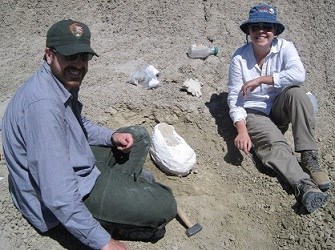
NPS Photo Fossil Prospecting Some of the fossils collected in the field have already been removed from the rock by natural erosional processes, in which case they can be put in bags and sent back to the lab. In other, more time consuming cases, the fossils remain embedded in the rock. Because of their fragility, fossils are generally not completely removed from the matrix (rock surrounding the fragile bone), but instead casted in a protective plaster shell or jacket. These jackets encapsulate the fossil and its matrix, which has to be removed later by a preparator.
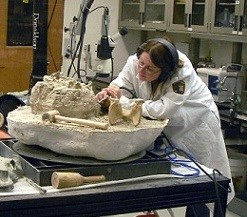
NPS Photo Preparation After the work in the field is complete, a fossil preparator makes fossils suitable for study or museum display. The preparator takes jackets, baggies, or tissue wrapped samples of fossil material out of accessions (fossil storage) and meticulously removes any of the surrounding matrix from the specimen only after it has been stabilized. They use tools such as air scribes (miniature jack hammers), sand blasters, small dental picks, and sometimes even sewing needles for the most delicate of jobs.
The time taken preparing a fossil for either research, molding and casting, or curation can vary. Preparation requires large amounts of patience and time, depending on the size and complexity of the fossil. Sometimes the paleontologist's finds are intact, needing little preparation or stabilization. 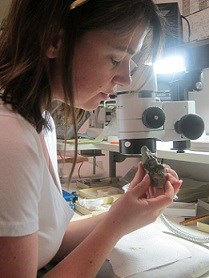
NPS Photo Curation Before the fossil can be cataloged, it must be identified. This is where the years of school in evolutionary biology and comparative anatomy come into play. The curatorial staff research, measure, and analyze the prepared fossil components in order to discern what the animal was. The staff also have access to the well kept notes of a samples removal from the field; including a description of the fossil locale, G.P.S. coordinates, the stratigraphic position of the fossil, what unit they are in along with the lithology, a preliminary identification of the find, the weather, and who was present on the day of collection. Once this information has been compiled, it is then ready to be put into collections. 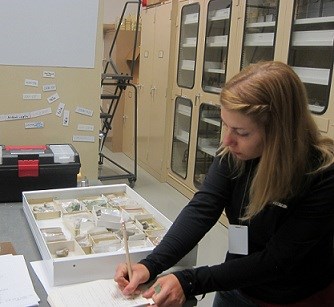
NPS Photo Collections The collections staff here is equipped to acquire and maintain the ever growing assembly of fossil finds in a secure and temperature controlled environment. After being processed, specimens are carefully indexed, catalogued and stored so they can be retrieved and studied by researchers from all over the world. For paleontologists, collection facilities are like libraries—places where information and knowledge can be obtained and used. After being catalogued specimens are placed in drawers within cabinets. The secure storage room is climate controlled to avoid any possible damage from excesses of humidity or temperature. The collection staff works to maintain an ever growing number of fossils. For paleontologists, both at the John Day Fossil Beds N.M. and around the world, there will always be information to be learned. 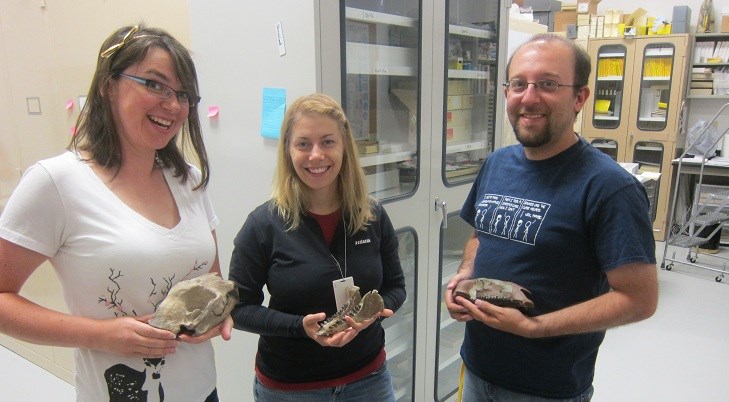
NPS Photo |
Last updated: February 28, 2015
